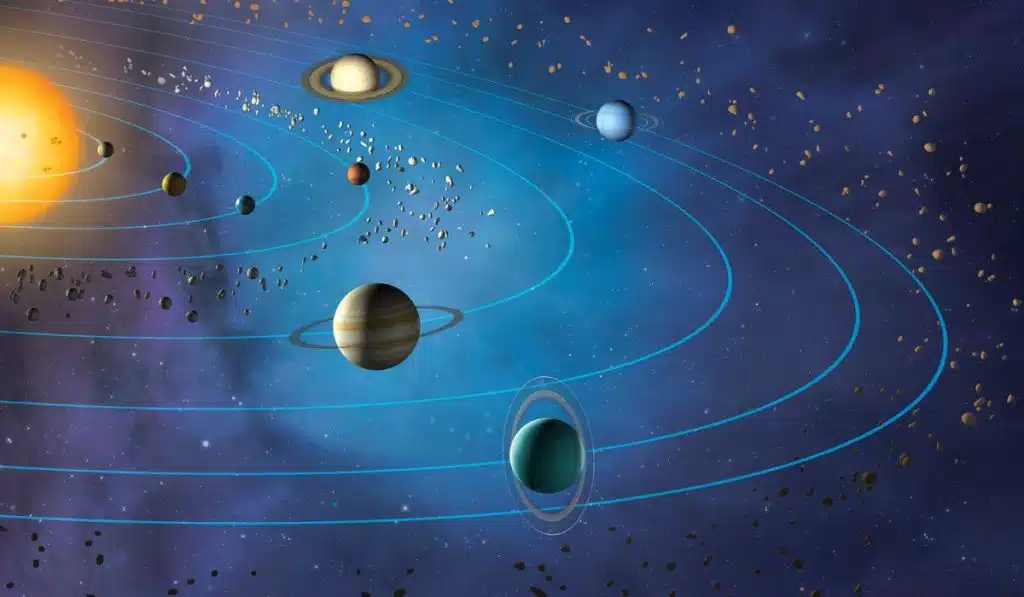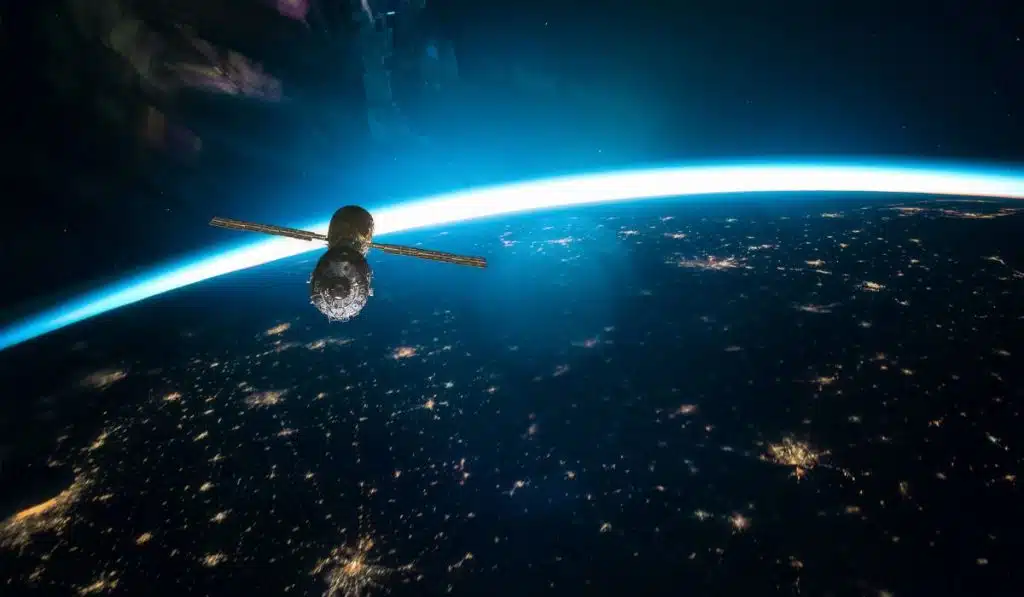How do solar sails work in space travel? Solar sails use light from the Sun to push spacecraft. They turn sunlight into motion without fuel. This makes journeys long and cheap. In this post, we will explain how solar sails work. We will cover their principle, design, materials, uses, and challenges. We will also show why Upwelledu guides and helps you better than any other site.
How Do Solar Sails Work in Space Travel? The Basic Principle
Solar sails use photons to move a ship. Photons are light particles. When they hit a mirror-like sail, they push it. Think of a small push on a big surface. Over time, these pushes sum up. The craft speeds up in space. This force is tiny but continuous. It can reach high speed after months or years. Solar sailing needs no fuel once in orbit.

The Push from Sunlight
- Photon Pressure
Sunlight has no mass but carries momentum. When photons reflect, they transfer that momentum. Each photon gives a tiny push. - Continuous Force
Unlike rockets, solar sails get a steady push. This can act forever in space. - No Fuel Needed
Once deployed, the sail uses sunlight only. This cuts fuel weight and cost.
Key Components of a Solar Sail System
A solar sail craft has four main parts. Each must work well.
1. Sail Material
- Lightweight Fabric
Made of thin plastic film like Mylar or Kapton. - Reflective Coating
A thin metal layer makes it mirror-like. - Tensile Strength
Must hold shape under small pulls.
2. Sail Frame
- Rigid Booms
Long rods hold the sail spread wide. - Foldable Design
Packs small in rocket fairing. - Easy Deployment
Springs or motors unfold it in space.
3. Attitude Control
- Orientation System
Small thrusters or spinning adjust sail angle. - Sun-Facing Control
Tilts sail to catch more or less light. - Fine-Tuning
Keeps craft on course.
4. Spacecraft Bus
- Power & Data
Houses batteries, solar panels, and computers. - Communication
Links craft to Earth. - Payload
Science instruments or cameras ride along.

How Solar Sails Propel Spacecraft
Reflective Momentum Transfer
When sunlight hits the sail:
- Photons arrive at high speed.
- They bounce off the reflective surface.
- The bounce transfers momentum to the sail.
- The craft speeds up in the opposite direction.
Adjusting Thrust Direction
By tilting the sail:
- Forward Push
Face sail directly to Sun. - Sideways Push
Tilt sail to change path around planets. - Slow-Down
Orient to reflect sunlight back to Sun.
Advantages of Solar Sailing
- Long-Duration Missions
No need to carry heavy fuel. - Cost-Effective
Light sail and small bus reduce launch mass. - High Final Speeds
Continuous thrust builds up speed over time. - Deep-Space Access
Reach beyond the outer planets with minimal propellant.
Challenges and Limitations
Weak Initial Thrust
- Push is tiny at first.
- Takes time to build speed.
Sail Damage
- Micrometeoroids
Tiny dust can tear film. - Radiation
High-energy particles degrade material.
Control Complexity
- Precise Aiming
Must keep correct angle to Sun. - Attitude Drift
Small forces turn sail over time.
Limited Maneuverability
- Cannot make sharp turns like rockets.
- Best for gradual changes.
Notable Solar Sail Missions
- IKAROS (JAXA)
First in-flight deployment and test in 2010. - LightSail 2 (The Planetary Society)
Demonstrated controlled solar sailing in 2019. - NASA’s NEA Scout
Planned to ride to an asteroid with a solar sail.
Future Prospects of Solar Sailing
Interstellar Precursor
Light sails may carry tiny crafts toward nearby stars.
Planetary Defense
Sun-driven crafts could inspect comets or asteroids up close.
Cargo Transport
Unmanned supply ships to space stations or lunar bases.
Hybrid Systems
Combine sails with small ion engines for quick maneuvers.

Why Upwelledu Is Better and More Helpful
- Plain Language
We use simple words so anyone can understand. - Clear Diagrams
Our posts include easy visuals (coming soon). - Deep Explanations
We cover basics and details in one place. - User Focus
We answer common questions you may have. - Regular Updates
We keep content fresh with new mission news. - No Jargon
We avoid big words and explain terms when needed.
Upwelledu guides you step by step. We cut out fluff. You learn fast and remember more.
Conclusion
Solar sails turn sunlight into motion. They rely on photon pressure, not fuel. Their key parts include a reflective sail, rigid frame, and control systems. They offer cheap, long-distance travel but need time to build speed. As materials improve, sails will explore deep space and even other star systems.
At Upwelledu, we make complex science easy. We use simple language, clear structure, and thorough coverage. Trust us for the best guide on solar sails and space travel.
Read More Relevant Article
- Hormone Balancing Diet Plan
- Best Diet Plan for Hormone Balance
- Gluten-Free Protein Powders
- Best Protein Powders Without Gluten
- How Wireless Power Transmission Works
- Exploring the Science of Wireless Electricity
- How a Nuclear Power Plant Works
- Understanding Nuclear Power Plants
- Nanotechnology in Medicine
- How Nanotechnology Is Revolutionizing Medicine






